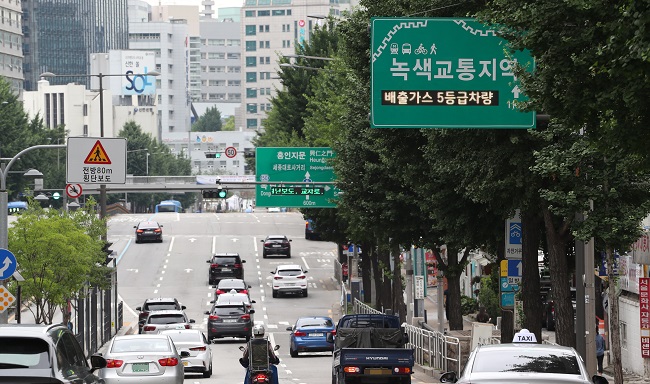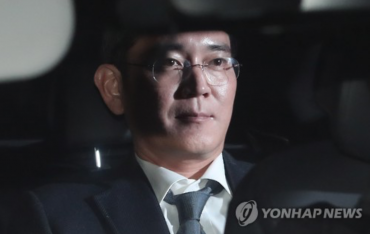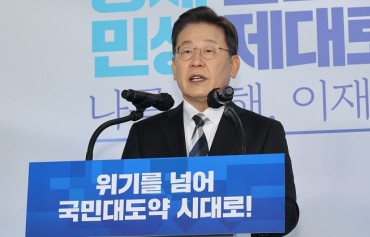
This July 1, 2020, photo shows a sign marking the beginning of the city’s “green transport zone,” where cars that emit large volumes of carbon dioxide are banned from entering. (Yonhap)
SEOUL, Aug. 5 (Korea Bizwire) — The presidential committee on carbon neutrality announced Thursday three policy road maps to achieve the goal of eliminating South Korea’s greenhouse gas emissions by 2050, subject for deliberation by experts and stakeholders until later this year.
President Moon Jae-in announced in October that the country will seek to go carbon neutral, or effectively reduce carbon emissions to zero, by 2050 in an effort to transform the country’s fossil-fuel reliant economy into an eco-friendly one.
Carbon neutrality has emerged as a global agenda for fighting climate change since the Paris climate accord went into effect in 2016.
The committee, co-chaired by Prime Minister Kim Boo-kyum and Yun Sun-jin, Seoul National University environmental professor, held a press conference and announced the three plans, roughly differentiated by the rate of eco-friendly technology adoptions.
The first plan aims to reduce greenhouse gas emission by 96.3 percent by relying partly on pre-existing resources, such as coal and liquefied natural gas (LNG), while pushing for energy transition based on carbon capture and utilization technology.
Carbon capture and utilization is a key technology to recycle carbon emissions by capturing carbon dioxide and converting it into other products, such as methanol.
Plan two aims to eliminate greenhouse gas emissions by 97.3 percent through suspension of coal development while maintaining liquefied natural gas development and seeking a drastic change in people’s way of life in terms of energy consumption.
The third plan seeks to eliminate greenhouse gas by 100 percent through the complete suspension of coal and LNG development and replacing energy consumption with green hydrogen technology.
The rate of nuclear energy usage stands between 6.1 percent and 7.2 percent in the three plans, which represents large decreases compared to the 23.4 percent rate in 2018.
Besides the basic energy transition goals, the committee said that a wide variety of efforts across areas of environment, technology and business must also be made to properly attain net-zero carbon emissions.
The government plans to produce a final roadmap in October after collecting feedback from the business and labor communities, civic society and local governments.
It also plans to listen to public opinion through a citizen conference on carbon neutrality set to launch Saturday.
Environmental groups, however, criticized the committee’s blueprints, calling them far fetched and ambiguous in the means of execution.
The Korea Federation for Environmental Movements issued a statement arguing that the three scenarios presented by the committee “were derived under extremely restrictive preconditions and were filled with uncertain measures in terms of execution.”
The group Energy Justice Actions demanded that the government stop what it called a “public deception,” deriding the plans as “nonsensical.”
(Yonhap)






